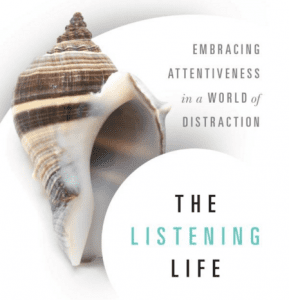This review is by Joe Canner, and I’m thankful for his careful reading of this book on one of the most sensitive topics in the world today.
 Becoming American? The Forging of Arab and Muslim Identity in Pluralist America (Baylor University Press) is a brand new book that provides a concise history of Arab and Muslim immigration into the United States and chronicles their integration into American society. The book is pricey for its size (96 pages of text), but reflects a considerable amount of research (179 works cited).
Becoming American? The Forging of Arab and Muslim Identity in Pluralist America (Baylor University Press) is a brand new book that provides a concise history of Arab and Muslim immigration into the United States and chronicles their integration into American society. The book is pricey for its size (96 pages of text), but reflects a considerable amount of research (179 works cited).
Estimates of the number of Muslims in the United States are surprisingly variable, ranging from two million up to eleven million. The number of Arab speaking immigrants and their descendants is estimated at three million. There are, of course, a large number of non-Arab-speaking Muslims in the US, including those from South Asia and African-American converts to Islam. (The latter are not discussed by the author, but may account for some of the variability in the estimates of the Muslim population.)
Arab Muslims started arriving in the US in 1870s and continued to immigrate in small numbers until WWII. Like many immigrants during this time, they rapidly assimilated, Anglicizing their names, working as laborers, and serving in the military. After WWII, many Muslim immigrants were students who were sent to the US to get professional training and never returned to their home countries. After 1965, changes in immigration laws resulted in a wider array of Muslim immigrants, both in terms of socioeconomic status and country of origin.
Many of the early immigrants became secular as they assimilated, and it is estimated that 80 percent of the Muslims in the US are “unmosqued”. More recent immigrants have been more interested in mosque life than their predecessors. However, the wide variety of immigrants has also resulted in tension between those who see the mosque as a community center whose activities are open to both genders and those who see the mosque as solely for (primarily male) worship. These two groups also clashed over the extent to which women should be covered in public.
Thus, there were two issues that American Muslims needed to come to grips with: (1) the appropriate way to integrate into American society without compromising their faith; and (2) how to accommodate the variety of doctrines and practices within the diverse Muslim community.
As a prelude to this discussion of pluralism, the author looks at pluralism in the Muslim world, which has been shaped by Western colonialism, the influence of socialism and nationalism during the Cold War, and the Iranian Revolution. The influence of each of these on Muslim views of pluralism are too complex to summarize here, but it is clear that these circumstances have shaped debates on pluralism among American Muslims.
American Muslim views of pluralism are as varied as the community itself. Within the Muslim community, there are those that would seek to require that all Muslims conform to a single interpretation of the Qu’ran, and there are others who promote tolerance of multiple interpretations. Similarly, there are those that advocate making attempts to change American society to make it more consistent with Islam (e.g., with respect to excessive sexual promiscuity and materialism), and there are others who suggest working within the system to engage in dialogue with non-Muslims with a view to promoting tolerance of Muslims. As the author summarizes it:
While some Muslims continue to focus obsessively on the current prevalence of anti-Muslim sentiments and Islamophobia, others have chosen to call attention to the guarantees of the Bill of Rights, which give Muslims the potential to have input into all aspects of the public square, just as other reviled religious minorities of the past, such as Catholics and Jews, have become full constituents of American society. They hold on to the promise of America as a pluralistic society and hope that the day when America will make room for them as Muslims is not far off. (66)
The final section of the book deals with internal and external attempts to define and shape a “moderate” Islam that would be more acceptable to American society.
Despite the popular belief that President Clinton was cozy with Muslims (perhaps due to being the first president to host a Ramadan “breakfast” and being the head of the first administration to appoint Muslim military chaplains and to hire Muslims in high ranking government positions), he was actually elected with the support of the pro-Israel lobby and a number of policies were enacted that were decidedly anti-Muslim. (Ironically, one such law was passed in response to the Oklahoma City bombing.) In contrast, Arab-Americans supported George W. Bush in 2000, primarily because he expressed concern during his campaign regarding profiling of Arabs. After the election, however, Bush made only token attempts to engage with the Muslim community and he seemed to be more concerned about alienating Evangelicals and Jews.
Regardless of where Bush actually stood as far as his support for Muslims, September 11th, of course, changed everything.
President Bush visited the Islamic Center in Washington, D.C., in an effort to calm public anger and discourage retribution against Muslims. To the consternation of many of his supporters, he declared Islam a “religion of peace.” The government now sought engagement with the Muslim community, but for a price. Not only did it demand the community’s repeated denunciation of revolutionary groups overseas, it asked for what Muslims perceived as a rejection of some of the basic tenets of their faith, namely a restructuring of their Islamic organizations and a recasting of their faith as “moderate Islam.” (77)
In addition, the 9/11 attacks further solidified fundamentalist Islam as the new threat to world order in the wake of the collapse of Soviet communism. Many Christians, as well, replaced Russia with Islam as the major antagonist of the Jews in their end-times theology. Finally, well-known anti-terrorism laws such as the PATRIOT Act targeted Muslims indiscriminately, angering Muslims both in the U.S. and abroad.
To be fair, the author notes that there were many Americans, including Christians and Jews, who stood up for Muslims following 9/11. In turn, many Muslims have gone to considerable effort to improve their image in the U.S. by volunteering for military service and participating in civil, human and religious rights activities. On the other hand, Muslims have generally been suspicious of government efforts to reach out to “moderate” Muslims and to even define what moderate Islam should look like. These efforts have been viewed primarily as an attempt to co-opt and undermine Islam rather than a genuine attempt reconcile with it.
The author concludes the book by noting that it has not yet become clear whether it is possible for Muslim immigrants to America to be both fully accepted as American while at the same time fully maintaining their Muslim faith. She does not offer solutions to how this should happen, but the evidence marshaled in this book clearly puts the onus on the American people and government to come up with a way to secure itself against terrorism without persecuting and co-opting American Muslims.











